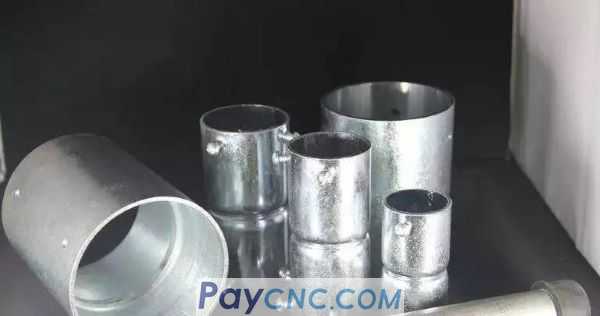 Galvanized
Features: Zinc is relatively stable in dry air and is not easy to change color. In water and humid atmosphere, it reacts with oxygen or carbon dioxide to generate oxide or alkaline zinc carbonate film, which can prevent the zinc from continuing to be plated and oxidized and play a protective role.
Zinc is easily corroded in acids, alkalis, and sulfides. The galvanized layer is generally passivated. After passivation in chromic acid or chromate solution, the formed passivation film is not easy to interact with humid air, and the anti-corrosion ability is greatly enhanced. For spring parts, thin-walled parts (wall thickness <0.5m) and steel parts that require high mechanical strength, hydrogen must be removed, and copper and copper alloy parts may not be hydrogenated.
Galvanizing has low cost, convenient processing, and good effect. The standard potential of zinc is relatively negative, so zinc coatings are anode coatings for many metals.
Application: Galvanizing is widely used in atmospheric conditions and other good environments. But not suitable for friction parts
Cadmium Plating
Features: Parts in contact with oceanic atmosphere or seawater and in hot water above 70℃, cadmium coating is relatively stable, strong corrosion resistance, good lubricity, dissolves slowly in dilute hydrochloric acid, but extremely in nitric acid Easily soluble, insoluble in alkali, and its oxide is also insoluble in water. The cadmium coating is softer than the zinc coating, the coating has less hydrogen embrittlement and strong adhesion, and under certain electrolytic conditions, the resulting cadmium coating is more beautiful than the zinc coating. But the gas produced when cadmium melts is poisonous, and soluble cadmium salts are also poisonous.
Under normal conditions, cadmium is a cathodic coating on steel and an anodic coating in oceanic and high-temperature atmospheres.
Application: It is mainly used to protect parts from the atmospheric corrosion of seawater or similar salt solutions and saturated seawater vapor. Many aviation, marine and electronic industrial parts, springs, and threaded parts use cadmium plating. It can be polished, phosphated and used as a base paint, but cannot be used as a food utensil.
chrome
Features: Chromium is very stable in humid atmosphere, alkali, nitric acid, sulfide, carbonate solutions and organic acids, and is easily soluble in hydrochloric acid and hot concentrated sulfuric acid. Under the action of direct current, if the chromium layer is used as the anode, it is easily soluble in caustic soda solution.
The chromium layer has strong adhesion, high hardness, 800~1000V, good wear resistance, strong light reflectivity, and high heat resistance. It does not change color below 480℃, starts to oxidize above 500℃, and has hardness at 700℃ Decreased significantly. Its disadvantage is that chromium is hard, brittle, and easy to fall off, which is more obvious when subjected to alternating impact loads. And has porosity.
Metal chromium is easily passivated in the air to form a passivation film, thus changing the potential of chromium. Therefore, chromium becomes a cathodic coating on iron.
Application: Direct chromium plating on the surface of steel parts as an anti-corrosion layer is not ideal. Generally, multi-layer electroplating (ie copper plating → nickel → chromium) can achieve the purpose of rust prevention and decoration. At present, it is widely used to improve the wear resistance of parts, repair size, light reflection and decorative lights.
Nickel plated
Features: Nickel has good chemical stability in the atmosphere and lye, and it is not easy to change color. It will only be oxidized when the temperature is above 600°C. It dissolves very slowly in sulfuric acid and hydrochloric acid, but easily soluble in dilute nitric acid. It is easy to passivate in concentrated nitric acid and therefore has good corrosion resistance.
The nickel plating layer has high hardness, is easy to polish, has high light reflectivity and can increase the appearance. Its disadvantage is its porosity. In order to overcome this shortcoming, multi-layer metal plating can be used, and nickel is the intermediate layer.
Nickel is a cathodic coating on iron and an anodic coating on copper.
Application: Usually in order to prevent corrosion and increase aesthetics, it is generally used to protect decorative coatings. Nickel plating on copper products is ideal for corrosion protection
But because nickel is more expensive, copper-tin alloy plating is often used instead of nickel plating.
|
 |
| Products Catalogue | Home | About Us | Retrofit | Download | News | Tech Support | Contact Us | |
|
|
|
